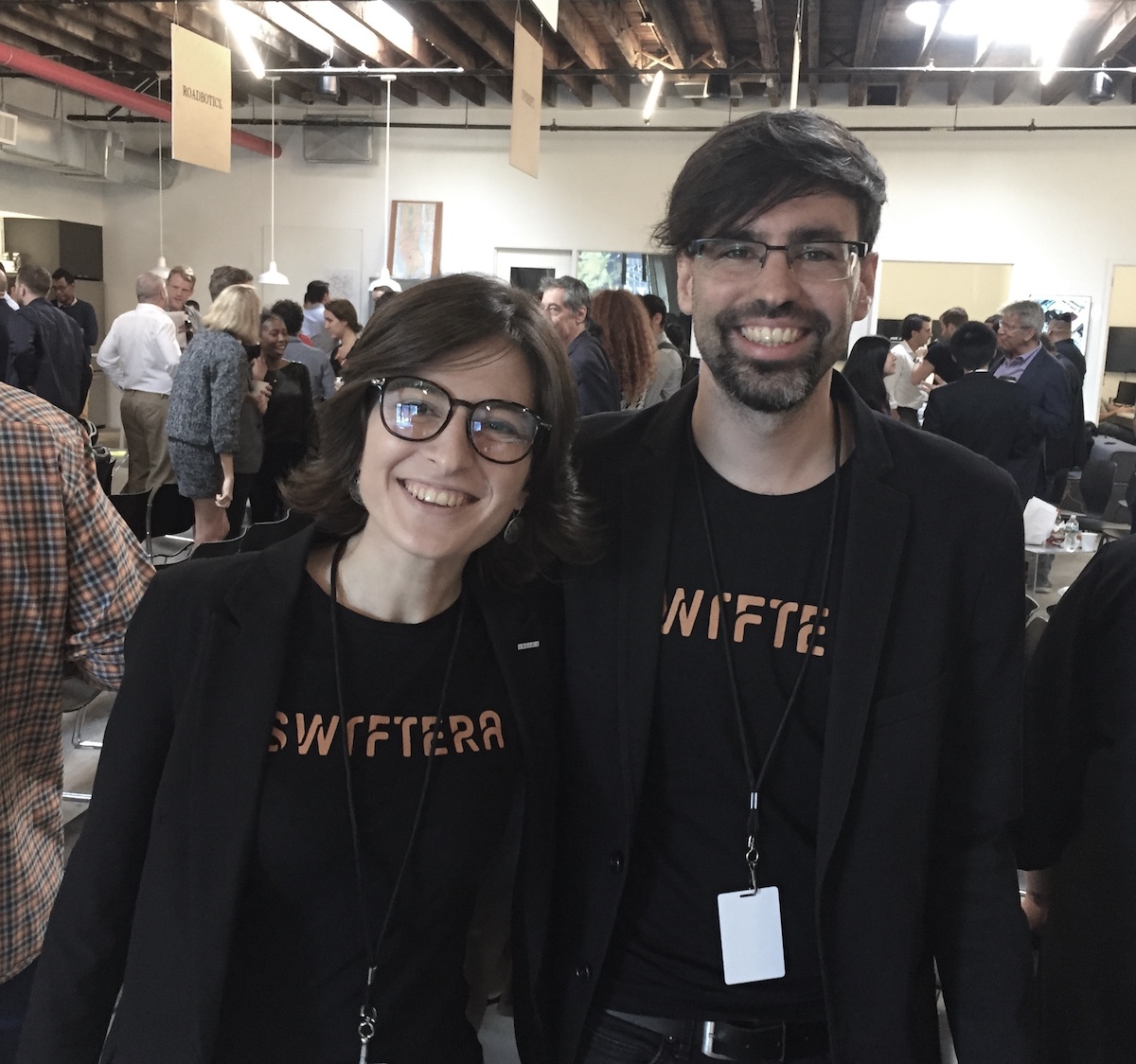What the cities of the future will look like was revealed last Thursday at Urban-X’s startup demo night for its third cohort of companies.
For the past five months, Urban-X, in partnership with venture fund Urban Us, has been accelerating nine smart-cities startups at the A/D/O space in Greenpoint. It’s the incubator’s third cohort of startups (check out the first two here and here.) The startups came from all over the world
“We believe that New York represents a replicable model,” Urban-X’s program director Micah Kotch explained.
These are the companies that piqued our interest:
Automobile navigation tech from Lunewave
What makes Lunewave exciting is that it’s working on a problem that’s one of the biggest pain points for what might be the biggest invention of the next decade or longer.
The company makes a 3D-printed radar antenna that it says is a significant improvement of the LiDaR sensors currently used in autonomous vehicles.
Autonomous vehicles today navigate themselves by using a combination of maps, cameras and LiDaR. In inclement weather, however, LiDaR runs into interference which can be problematic for the vehicle’s navigation. Radar is way better in bad weather, but has less resolution in the images it produces than LiDaR. Enter Lunewave.
“Our team has found a solution to overcome the shortcomings of regular radar sensors,” explained Jiang Xin, Lunewave’s cofounder and CEO. “At the heart of Lunewave is a process to cheaply 3D print an antenna that no other company in the world has been able to fabricate. Our software allows cars to identify signal interference with consistent performance across all weather conditions.”
Big, if true!
Industrial airships from Swiftera
There are somewhere between 1,000 and 5,000 satellites orbiting the earth today, depending on which organization is counting. Many of them are no longer operational, and many more of them have broken apart and are now hundreds of pieces of metal space junk in orbit. The satellites in orbit are used for different purposes: GPS location, data communication, television, surveillance, etc. One thing they all have in common, though: they’re hella expensive to get up there.
That’s the problem Swiftera’s solving. Their idea is to forego the launching of rockets to propel objects into orbit by raising mapmaking and visual recording equipment by airships, aka industrial-grade blimps. The airships sit in the stratosphere, the second layer of the atmosphere, about six to 30 miles above the surface of the Earth.
“The airship provides unprecedented performance,” explained cofounder and CEO Hripsime Matevosyan.
“They’re affordable because we don’t need expensive rockets. They’re closer to ground, so we can see better [and they have] twice the resolution of the best satellites right now.”
Matevosyan said only one airship is needed per city, and that the images they produce are high-resolution enough to be able to see park benches and people (though she noted the company blurs all the faces of people).
Is it creepy to have an airship sit over a city that can see everything happening all the time? (Aberdeen, anyone?) Honestly, maybe, but this is the world as it is and there’s a market for it. Swiftera said the companies it sells to will be data analytics and construction companies, mostly.
Distributed solar from Blueprint Power
The premise of Blueprint Power is that buildings will increasing be outfitted with solar panels in the future, and able to create some or all of the electricity they need, and maybe more than they need. It’s an idea we hear all the time when talking to founders in the renewable energy sector, the idea being premised on the idea that the price of solar panels will continue to keep falling.
Should that happen, Blueprint Power is in a good position. The company provides a market for local energy production and consumption. So far it has pilot markets, which it calls “clubs” in Miami and New York.
“Regulations have changed to allow smaller generators to transact in the marketplace, but for one building, it’s like the juice isn’t worth the squeeze at this point,” explained cofounder and CEO Robyn Beavers. “Our message to building owners is that you should own this platform. If they don’t build it someone else will, whether it’s utilities or tech firms. They have the possibility of becoming one of the most profitable future utilities.”
Join the conversation!
Find news, events, jobs and people who share your interests on Technical.ly's open community Slack



